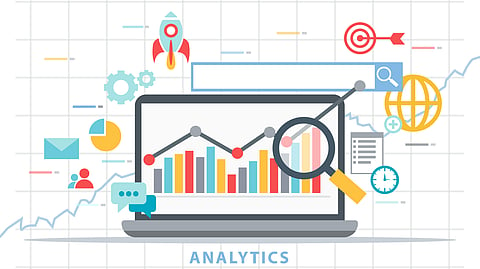Top 5 Trends In Digital Media Analytics
Written by: Rashmi
When everything changes so rapidly in the digital sphere, it is difficult to stay up-to-date with the ever-evolving data trends. Readers' behaviours have transformed quite drastically since the pandemic and they are expecting more and more content.
To fulfill these new-age demands, every business has to adopt a long-term vision. And for that, they need digital media analytics. This involves understanding reader behavior and then making critical decisions to boost the company’s growth.
In this article, we have gathered the top 5 trends in digital media analytics that businesses should keep in mind while planning their next content strategy. Keep reading:
Focus on First-Party Data
The days are gone when publishers or media channels had to depend on third-party data via cookies for understanding their audience’s behavior.
Now, they are looking at the first-party data collection, i.e., data you collect through your own sources for free, for audience building. This ensures that you can have your own stack of data that is relevant and helpful in making smart decisions.
More Reliance on Artificial Intelligence and Machine Learning
Artificial Intelligence and Machine Learning – these two buzzwords are flying across the digital media industry like anything. More and more businesses are investing in AI and ML to uncover insights, provide forecasting, and more. These technologies can also help with multiple aspects of digital marketing as well, such as reader engagement, content management, and conversion optimization.
And the best part? There is no need for manual effort and you get high accuracy data in a short period of time.
Combined Data Collection Models
Tracking the data on both websites and apps can be cumbersome and that’s where the new tools offer robust solutions. Take our Bold CMS as an example. The headless CMS not only lets you publish content seamlessly on multiple channels but also measures the analytics for each story to offer better insight into reader behavior.
Analytics Taking The Better Position
Digital media analytics is becoming a necessity now. Every publisher wants to top the success chart and for that, they require strong predictions and analysis of what people like. They are focusing not just on the historical data but on the analytics that helps them deal with disruptive changes in the future.
This predictive analytics also improves their ability to foresee future challenges and tackle them beforehand. The recommendations and personalized content that we see are examples of how data analytics of a particular reader can be processed to serve them the best possible content.
Improved Reader Experience
Reader experience is the driving factor behind any publisher’s growth. And that is why every content piece and every marketing strategy revolves around what the audience wants. A good reader experience translates to higher engagement. Digital media analytics comes into the picture with its ability to help publishers understand their readers better.
The intelligent ML and AI algorithms can quickly offer a deep insight into reader behavior. By using this data, the decision-makers can then customize the reader experience at every touchpoint. The result is improved reader experience and higher retention.
The Road Ahead
It won’t be wrong to say that now is the most crucial time for businesses to start investing in digital media analytics. The market is dynamic and there is no other way to grow than to actually put emphasis on the likes and dislikes of the readers.

